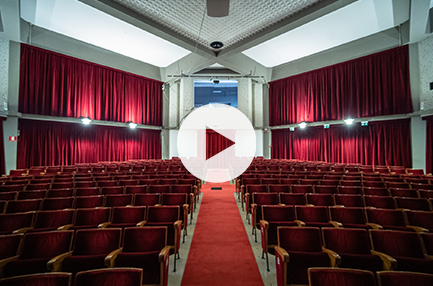What the neighbourhood of Porta Romana in Milan used to look like and what it is like today
When you look at the relief model of the ancient Roman city of Mediolanum in the Archaeological Museum of Milan, you can almost imagine what it must have been like to walk along the Mediolanum-Placentia. It was a porticoed street with frescoed walls which marked the beginning of a long journey towards the capital.
On the other side within the walls, you would have found the main decumanus road leading to the Forum.
If you take a look around you, it will soon be apparent that very little is left of Ancient Rome in Milan. There isn’t even a street named after the old republic. But one thing that does remain is the archway of Porta Romana. It was built in 1548 as part of the Spanish Walls, but today it is an integral part of the roundabout leading to the city centre and the major southbound thoroughfares.
All the land outside the walls was countryside and fields and it stayed this way until halfway through the eighteen hundreds.
The zone of Via Orti (known as the “Brera district of Porta Romana” in 1870) used to afford an uninterrupted view of the Duomo on the horizon. At the time, there were just stretches of open land without any buildings to get in the way.
When you are passing through Corso Lodi, you won’t realise that you are actually standing on one of the most important canals of the era: the Redefossi which is now underground.
The main landmarks in the area of Porta Romana
Of all the barracks, monasteries and shelters built at the end of the same century, one that particularly stands out is Jeanne Jugan’s old people’s home which belongs to the religious congregation of The Little Sisters of the Poor. It is there for visitors to admire today. Although it has since become a residential complex, it still boasts magnificent fourteenth-century Lombard architecture.
The thermal baths of Milan, which are right next door to Porta Romana, also have an interesting story to tell. Created by Tettamanzi and Minorini in 1908, this building boasts an art-nouveau façade and was originally a place of eternal rest rather than one for momentary relaxation. After two lively interludes as the first social club of the ATM of Milan and then as a local nightclub, it has now become the seat of the Milanese thermal baths and is open to the general public.
Nowadays the urban fabric is much denser. And all that is left of the vegetable patches is a name (Orti means vegetable garden in Italian). Today Via Orti is just one of the many streets overlooked by late-nineteenth-century council houses, elegant twentieth-century art-nouveau buildings and residential complexes from the 50s and 60s in a magical medley of styles and epochs.
The thermal baths of Milan, which are right next door to Porta Romana, also have an interesting story to tell. Created by Tettamanzi and Minorini in 1908, this building boasts an art-nouveau façade and was originally a place of eternal rest rather than one for momentary relaxation. After two lively interludes as the first social club of the ATM of Milan and then as a local nightclub, it has now become the seat of the Milanese thermal baths and is open to the general public.
Nowadays the urban fabric is much denser. And all that is left of the vegetable patches is a name (Orti means vegetable garden in Italian). Today Via Orti is just one of the many streets overlooked by late-nineteenth-century council houses, elegant twentieth-century art-nouveau buildings and residential complexes from the 50s and 60s in a magical medley of styles and epochs.
Discover more





